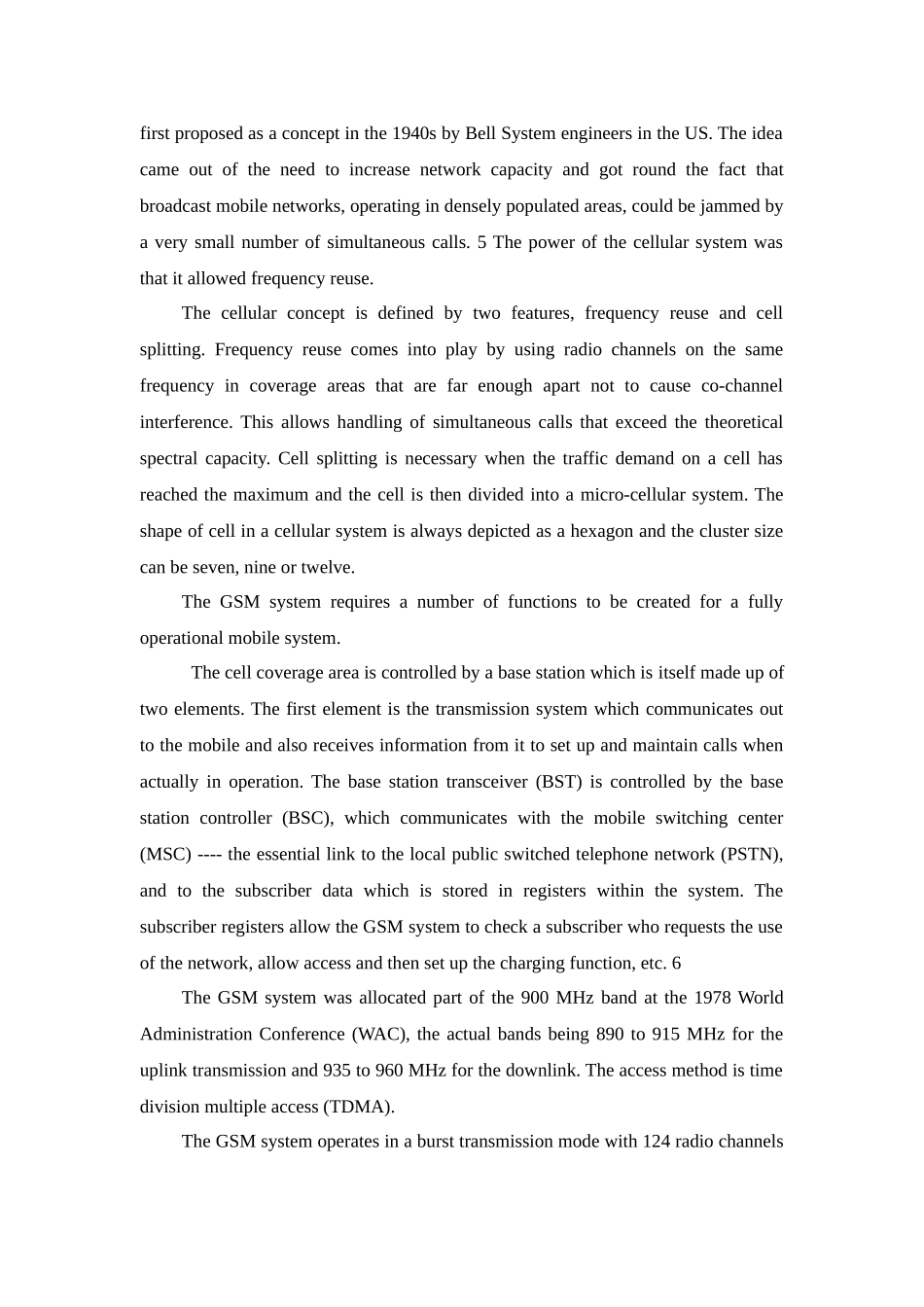GSM(Global System for Mobile Communication)The success of mobile systems across the world is a sign that communication is moving towards a more personalized, convenient system. People who have to use a mobile phone on business soon begin to realize that the ability to phone any time, any place in one's personal life rapidly becomes a necessity, not a convenience.The speed and rapidity with which the personal communications revolution takes place is, unlike fixed transmission systems, highly dependent on technology and communication standards.For mobile the three key elements to achieving service take-up are the cost, the size and the weight of the phone, and the cost and quality of the link.3 If any of these are wrong, especially the first two, then market growth is liable to be severely restricted. The fixed telephone service is global and the interconnection varies from coaxial cable to optical fibre and satellite. The national standards are different, but with common interfaces and interface conversion, interconnection can take place. For mobile the problem is far more complex, with the need to roam creating a need for complex networks and systems. Thus in mobile the question of standards is far more crucial to success than fixed systems. 4 In addition, there is also the vexed question of spectrum allocation in the mobile area. Mobile systems originally operated in analog mode in the 450 MHz band, moving later to 900 MHz with digital GSM and then to 1,800 MHz with personal communication systems. The history of mobility can split into generations. The first generation systems were the advanced mobile phone systems (AMPS) in the US, total access communication system (TACS) in most of Europe...


